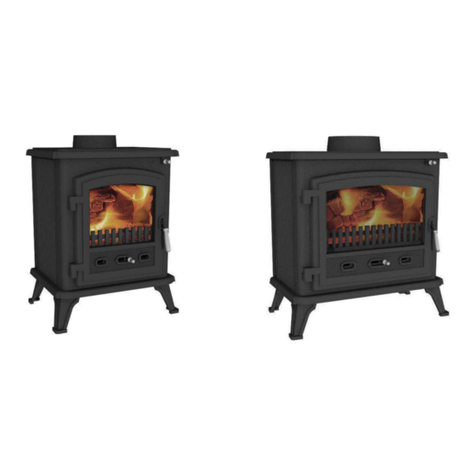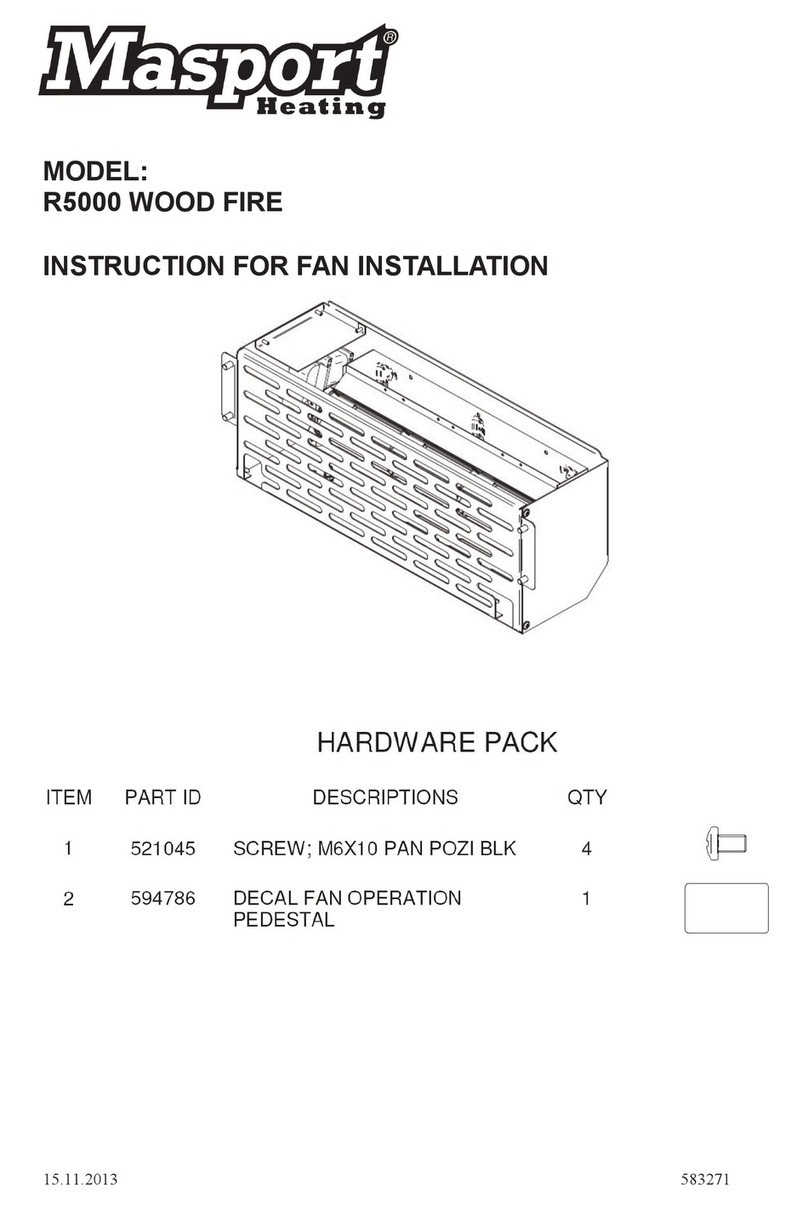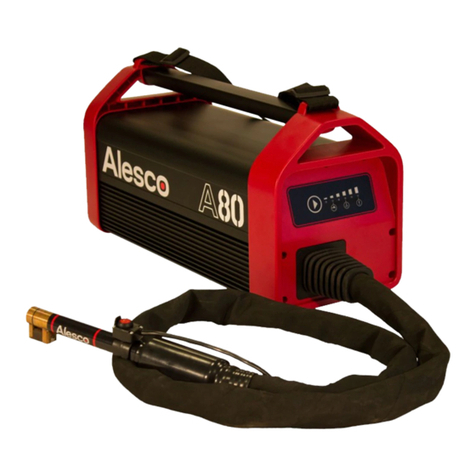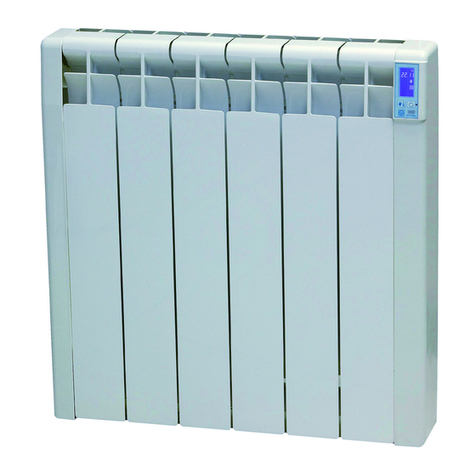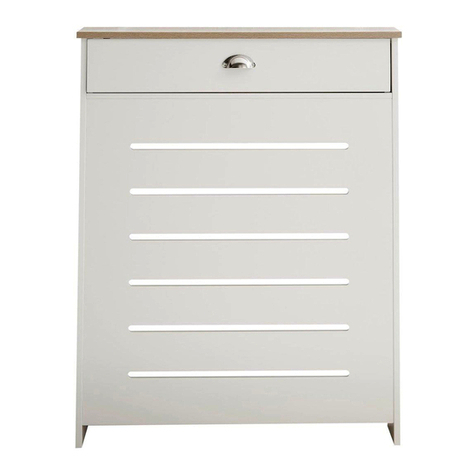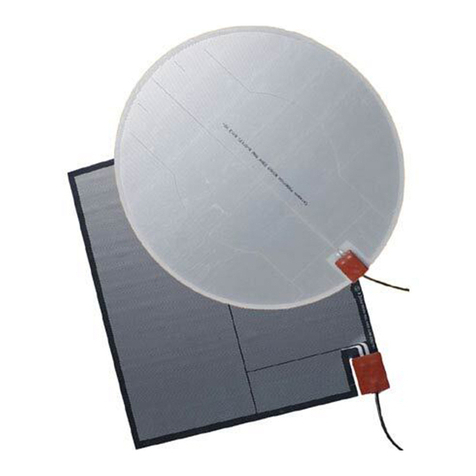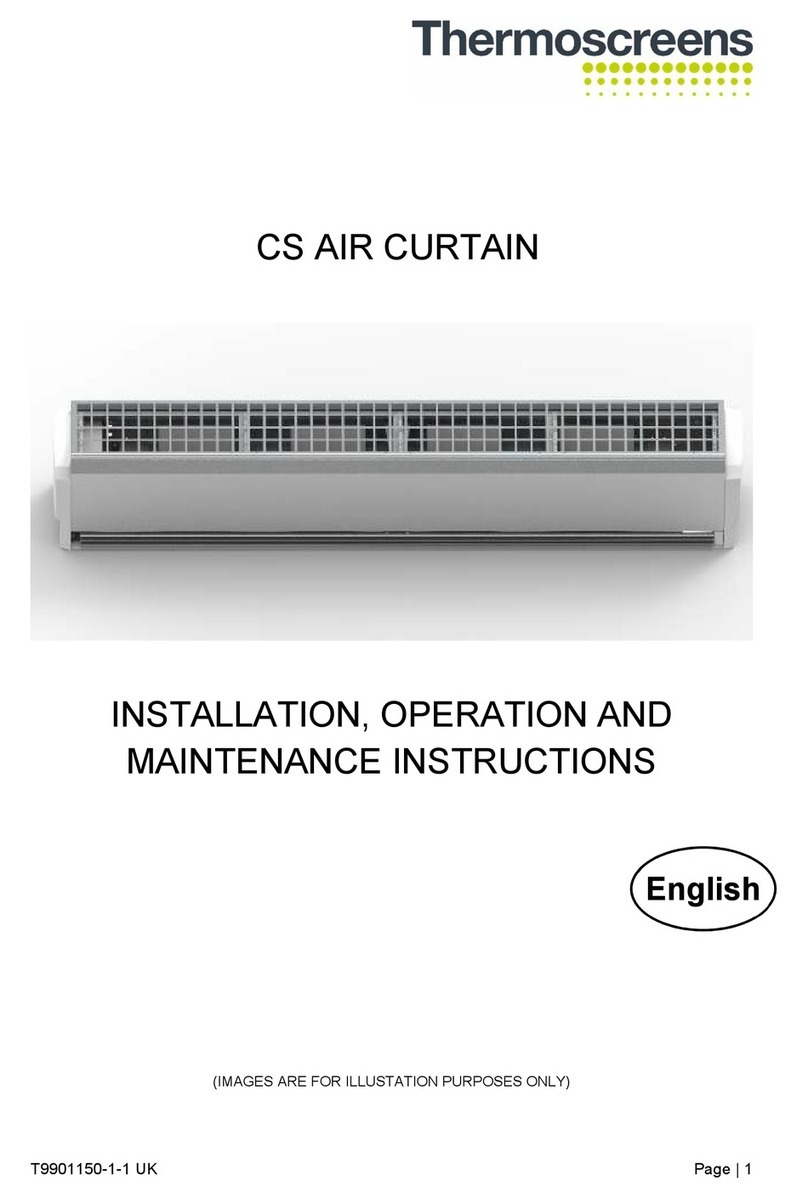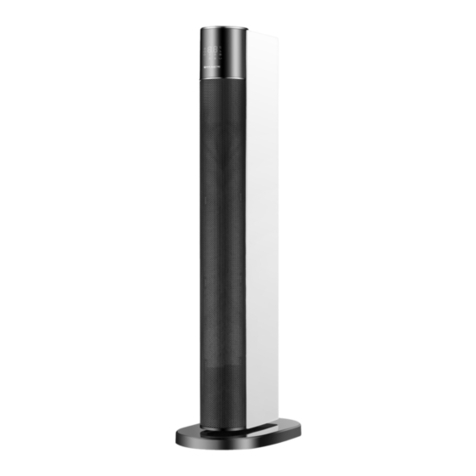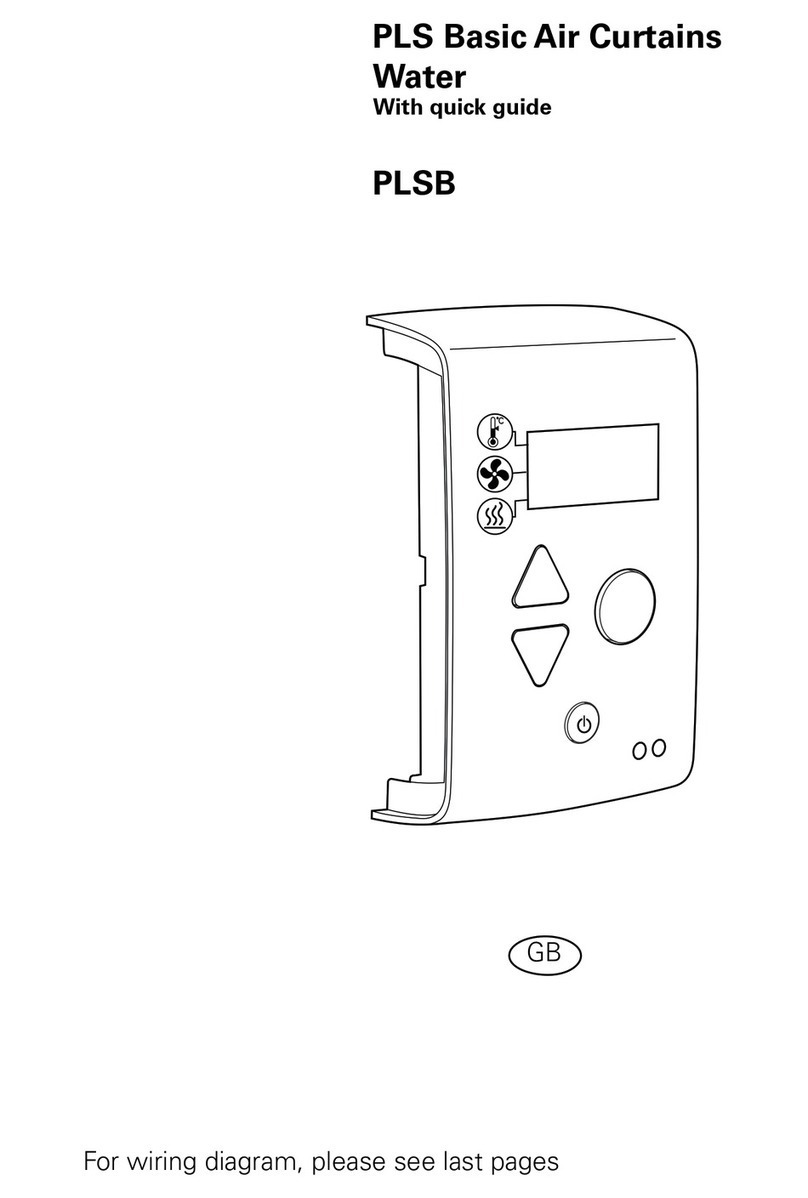Masport ARCADIA Wiring diagram

ARCADIA,
UTOPIA,
UTOPIA Series 2 &
GRAND UTOPIA
SOLID-FUEL HEATERS
INSTALLING
AND
OPERATING
INSTRUCTIONS
585877

THIS BOOK CONTAINS IMPORTANT INFORMATION.
PLEASE KEEP IT IN A SAFE PLACE FOR FUTURE REFERENCE.
CONTENTS
INTRODUCTION ...........................................................................2
UNPACKING..................................................................................3
ASSEMBLY....................................................................................3
POSITIONING................................................................................4
RECOMMENDED FLUES FOR AUSTRALIA ..............................5
WALL SHIELDING........................................................................5
HEARTH REQUIREMENTS..........................................................6
CORNER HEARTHS ......................................................................7
HEARTH CONSTRUCTION ..........................................................7
FITTING A WATER COIL.............................................................8
INSTALLING THE FLUE ..............................................................9
MANTEL-SHELF SHIELDING......................................................9
FIXING IN POSITION....................................................................9
OPERATING INSTRUCTIONS
BASIC INFORMATION ...............................................................10
LIGHTING UP..............................................................................10
OPERATING HINTS ....................................................................11
SAFETY........................................................................................11
MAINTENANCE ..........................................................................12
INTRODUCTION
In the interests of your safety, most building regulatory Authorities in Australia and
New Zealand require any solid fuelled heater installation to comply with the relevant
Safety Standard. In Australia, that Standard is AS 2918-1990, while in New Zealand
the Standard is NZS 7421-1990. They may also have local requirements in addition to
those in the Standard so you should approach your local Building Authority before
commencing installation to establish whether you will require a Permit and whether you
will need to meet extra requirements. MASPORT radiant heaters have been tested to
ensure that they will meet the appropriate safety Standard requirements if the
instructions in this book are followed.
PLEASE ENSURE THAT ONLY COMPONENTS APPROVED BY MASPORT ARE
USED FOR THE INSTALLATION, as substitutes may adversely affect performance
and might nullify compliance with the requirements of your Standard.
This recommendation is endorsed by Australian Standard 3869 - 1991, which states:-
WARNING: THE APPLIANCE AND FLUE SHALL BE INSTALLED IN
ACCORDANCE WITH AS 2918 AND THE APPROPRIATE REQUIREMENTS OF
THE LOCAL BUILDING REGULATORY AUTHORITY.
CAUTION: MIXING OF APPLIANCE OR FLUE SYSTEM COMPONENTS FROM
DIFFERENT SOURCES OR MODIFYING THE DIMENSIONAL SPECIFICATION OF
COMPONENTS MAY RESULT IN HAZARDOUS CONDITIONS. WHERE SUCH
ACTION IS CONSIDERED, THE MANUFACTURER SHOULD BE CONSULTED IN
THE FIRST INSTANCE.
2

WE RECOMMEND THAT THE INSTALLATION OF YOUR
MASPORT HEATER BE CARRIED OUT BY A SUITABLY
QUALIFIED SPECIALIST INSTALLER.
CAUTION. SURFACES ON RADIANT HEATERS CAN BECOME VERY HOT. IF
CHILDREN OR ELDERLY AND INFIRM PERSONS MIGHT ACCIDENTALLY
TOUCH THE HEATER WHILE IT IS OPERATING, WE RECOMMEND THE
INSTALLATION OF SUITABLE PROTECTIVE GUARDING.
UNPACKING
After removal of the shipping carton, open the door and take out all loose components.
ASSEMBLY
Using the shipping carton to prevent possible paint damage to the floor or floor
coverings, roll the heater gently onto its back. USING THE BOLTS PROVIDED
(NOT THE SHIPPING BOLTS — THESE CAN DAMAGE THE BASE
CASTING), bolt the four legs onto the base of the heater, making sure to fit the bottom
heat shield directly under the heads of the leg bolts. the heat shield is slightly concave
and this side should face the heater base. Fitting this shield is essential if overheating of
the floor below the heater is to be avoided.
If extensions to the top of the Utopia (warming shelves) are being fitted, it will be
convenient to do this now. The extensions are each attached by a support bracket with
four screw holes. Attach the bracket to the underside of the top casting with two screws,
ensuring that the bracket support leg touches the side of the stove. Fit screws through
the other two holes of the bracket into the bottom of the extension. Note that the
extensions are right and left handed. When fitted correctly, the straight back edge of the
extension should align with the back edge of the top of the heater, and the extension
should fit snugly against the top casting.
Raise the heater into its upright position, again taking care not to damage the floor.
Before fitting the firebox ceiling baffle, first locate the four support lugs which will
support it near the top of the firebox. Insert the baffle into the firebox, ensuring that the
curved centre section is at the rear and is facing downwards. Tilt the baffle to about 45•
with its front edge horizontal and uppermost. Keeping it in this orientation, lift it until
its top edge passes behind the two front support lugs and then move it upwards and
toward you until the baffle is resting on the two front lugs. Then swing the baffle up at
the rear until it can slide backward to rest on top of the rear lugs. When correctly fitted,
the baffle will sit at a 20• slope and its rear edge will fit against the rear of the firebox.
The top part of the rear heat shield is shipped upside down inside the top end of the
main section of the rear heat shield. Remove the two screws holding it, rotate it 180•,
and re-fit the screws.
If it is intended to use the top flue exit, fit the flue socket to the top of the heater using
the three screws provided. If the rear outlet is to be used, remove the four screws
holding the rear heat shield assembly, take off the blanking plate covering the rear flue
outlet and fit the flue socket instead. The blanking plate should then be fitted to the top
of the heater. Carefully remove the ‘knock-out’ in the rear heat shield and refit the
shield.
Fit the fuel retaining plate vertically inside the bottom of the door opening with the
angled edge facing away from the firebox at the top.
3

POSITIONING YOUR HEATER
The heater must not be installed under a heat sensitive ceiling of less than normal height
(approx. 2.4 metres). No wall or other immovable object may be closer to the front of
the heater than one metre. The heater may be installed in front of, or partially into a
fireplace which has a suitable heat resistant surround, but any heat sensitive material
(such as a mantel-piece) which protrudes from the face of the fireplace surround will
need to be completely shielded. This shielding is best provided by a sheet metal panel
held 12mm from the face to be protected on heat resistant spacers. The inner edge of
the shield must abut the face of the fireplace surround and the outer edge and ends must
have an unobstructed 10mm gap to allow cooling air circulation. Floor protection, to
the extent shown below, must be provided either by the existing hearth or by an
extension to it. Any extension must be securely fixed and must fit snugly against the
hearth so that there is no gap which might allow a small ember to reach the floor
beneath. (See INSTALLING THE FLUE for the flue requirements for a fireplace
installation)
Finalise the installation position for your woodfire only after considering the necessary
heater-to-wall distances (see below) and checking the practicability of installing the flue
system through the ceiling and roof or wall. As a guide, the flue shielding and the
25mm clearance gap around it in the ceiling space will occupy a diameter of
approximately 300mm, and this must be available without the removal of structural
beams.
If a ‘through-the-wall’ flue system is contemplated, consult AS 2918 or NZS 7421 for
the appropriate wall constructional requirements and verify that these will be feasible
for your existing wall structure.
B
D
A
C
Parallel Inst allation
.
.
E
E
F
F
Corner Installation
MINIMUM DISTANCES (mm) TO HEAT SENSITIVE WALLS WHEN
THE REAR SHIELD AND A FLUE HEAT SHIELD ARE FITTED
A B C D E F
Australia Arcadia 200 575 350 838 450 700
Utopia Ser. 2 300# 500* 455# 808 350*§ 650§
New Zealand Arcadia 300 512 450 775 350 600
Utopia 345 642* 500 950 350* 650
See next page for recommended Australian flue options
#Reduce by 50mm if the flue heat deflector is polished stainless steel.
* These dimensions are measured from the edge of any side-fitted warming shelf. In this
case, dimensions Dand Fwill increase accordingly.
§ Increase by 50mm if no flue heat deflector is fitted.
4

RECOMMENDED FLUES FOR AUSTRALIA
ARCADIA: Floate Metal - Flomet 5” Super Single with 180• polished stainless steel flue heat
shield.
Shamic 1A with 900mm 180• polished stainless steel flue heat shield.
UTOPIA Ser 2: Acorn Metal Products - Special Insulated kit with 900mm 120• polished reflector and
425 dia. ceiling plate.
Floate Metal - Flomet Super Single with full length decorative heat shield with 120•
solid back.
Statewide Heating - Model M1 with 900mm enamelled flue shield.
Woodland Fireplaces - Woodland Standard Flat Ceiling Plate flue kit with 900mm
enamelled flue shield.
WALL SHIELDING
The minimum distances between the heater and heat sensitive walls, (shown in the
Table on page 4), may be reduced significantly by fitting suitable heat shield(s) on the
adjacent wall(s). Shields must be made of heat resistant material (such as Harditherm or
Supalux) and they must be mounted on the wall on non-combustible spacers arranged
to not obstruct the vertical flow of cooling air behind them. Shields mounted against the
wall are virtually useless.
Ventilation slots must be provided at the top and bottom of each shield, each slot
having a cross-sectional area not less than half the width of the shield multiplied by the
spacing depth. The slots should, as far as possible, extend across the full width of the
shield.
EXAMPLE: A 1200mm wide shield spaced 25mm from the wall must have ventilation
slots, top and bottom, each of an area not less than 600 x 25 mm2, i.e. 15,000mm2. So
if the effective length of each slot is 1m, it will need to be 15mm wide
Three types of shield are recommended:-
Type Layers Spacing Clearance Factor
A One 12mm 0.4 *
B One 25mm 0.3 *
C Two 12 & 12mm 0.2 *
* Valid only for shields within 45• of vertical.
To find the reduced minimum distances, multiply the figures in columns A, B and E
(from the Table on page 4) by the appropriate clearance factor.
EXAMPLE: An Arcadia in New Zealand, mounted parallel to the wall, has a normal
minimum rear clearance of 300mm and a side clearance of 512mm. The reduced
minimum clearances for type A shielding would be 300 x 0.4 (120mm) at the rear, and
512 x 0.4 (205mm) at the side.
NOTE: The original heater shields and flue heat shield must still be
fitted to the heater when the above factors are used.
WALL SHIELD SIZES
Shields must extend at least 600mm each side of the heater centreline on side and rear
walls, or in the case of a corner installation, 1200mm each way from the corner. They
must be at least 1200mm high (measured from the hearth top).
Because the reduced wall clearances will bring the flue close to the rear wall, (in the
case of a parallel installation), it will be necessary to extend the wall shield upwards to
protect the wall for at least 300mm each side of the flue centreline. The extended rear
wall shield will, of course, finish just clear of the ceiling to provide the top ventilation
slot described above.
WALL SHIELD FINISHES
Because the outer surface of the wall shield will become quite hot, any surface finish
must not be heat sensitive. Possibilities are high temperature paints or cladding with
ceramic tiles, slate etc. 5

HEARTH REQUIREMENTS
Unless your heater will be standing on an un-covered fireproof floor which extends at
least as far as the minimum hearth areas shown below, it will be necessary to provide a
hearth for floor protection. See page 8 for construction details.
Having decided exactly where your heater will be installed, you will be able to establish
the size of hearth you will need. Where the minimum requirements bring the edge of
the hearth nearly to a wall, it is better to extend the hearth to meet the wall. In fact it is
sensible to increase all dimensions by moving up to the next available standard hearth
size so that precise positioning of the heater on the hearth will not be needed.
B
C
D
A
G
H
J
Gl ass
W
360 min.
Wall
Minimum dims.
for 'A' are on
page 4.
See Notes
below.
MINIMUM HEARTH EXTENSIONS (mm) WHEN THE REAR
HEAT SHIELD IS FITTED
¥
Rear
Heat
Shield
W B C D G H J
Australia
New Zealand
New Zealand
(hearth flush)
(hearth 50mm high)
Arcadia
Utopia
Arcadia
Utopia
Arcadia
Utopia
855 635 300 165 150 335 525
1075 760 425 275 150 335 525
975 680 345 225 150 335 525
1165 980 550 275 155 430 615
1065 900 470 225 155 430 615
155 430 615855 730 300 120
¥ Note. The hearth protecting a heat sensitive floor must extend behind the heater by at
least the following distances (measured from the rear heat shield):-
Arcadia Utopia
Australia 200mm 100mm
New Zealand 325mm (or to the wall if closer) 100mm
Usually a neater installation will result if the hearth extends right up to the rear
wall, but take care not to obstruct air flow into the lower ventilating slot of any wall
shields that may be fitted.
6

CORNER HEARTHS
While the information in the previous section details the MINIMUM size of hearth
necessary to comply with the Safety Standards, it may be desirable to use a larger
hearth for æsthetic considerations. A particular example is when the heater is installed
diagonally in a corner. A neater appearance will result if the hearth is carried right into
the corner and is shaped as shown below. The chart facilitates calculation of the
MINIMUM dimensions required for hearths of this shape. The minimum allowable
values for dimension ‘E’ are given in the tables on page 4.
E
E
X
X
Y
YSpecial Corner
Hearth Arrangement
.
.
X Y
NOTE: YOUR SPECIFIC MEASUREMENT FOR'E' MUST BE
ADDED TO 'X' AND 'Y' TO FIND THE APPROPRIATE
MINIMUM HEARTH DIMENSIONS.
SEE PAGE 4 FOR MINIMUM VALUES OF'E' .
MINIMUM DIMENSIONS
(Millimetres)
Australia 750 430
New Zealand
(hearth 50mm high)
New Zealand
(hearth flush)
Arcadia
Utopia
Utopia
Utopia
Arcadia
Arcadia 800 540
750 470
1050 730
1000 680
850 550
HEARTH CONSTRUCTION
In Australia the minimum hearth construction requirement is a 6mm fibre cement sheet.
It is usually fastened directly to the floor.
In New Zealand, the hearth will need the insulating qualities provided by two layers of
MICORE 160 (each 16mm thick), or one layer of WOODTEX (35mm thick). Both
these materials give adequate protection for solid timber or particle board flooring.
Alternatively, a reinforced concrete slab at least 50mm thick raised up from the floor on
7

insulating blocks to allow air to circulate beneath may be used. There must be at least a
12mm high gap unobstructed along at least two thirds of each side, and care must be
taken to ensure that this amount of space will not be encroached on by laying carpet
etc. To be safe, a 25mm high gap is recommended. If preferred, instead of having a gap
under the concrete slab, it may be poured on top of two sheets of Micore 160 lying
directly on the floor. If cast in place, an impermeable sheet must be laid on top of the
Micore to prevent water damage from the concrete mix. Constructions which are NOT
suitable as insulating hearths are bricks and concrete when they are in contact with heat
sensitive flooring material.
In all cases, in both countries, a durable top surface will be needed to resist damage
from dropped embers. Obvious choices are slate, bricks and ceramic tiles. Gaps in the
top surfacing material must be grouted to prevent embers from penetrating. A trim
moulding will provide a neat edge finish.
Floor
Australia — Not less than 18mm thickness of fibre cement board
New Zealand — Two sheets of MICORE160 or
one sheet of WOODTEX (35 thick) Ceramic tiles
Trim moulding
Recommended hearth constructions are:-
FITTING A WATER COIL
Water heating coils can be fitted to Arcadia and Utopia heaters. The pipe attachment
positions are shown below.
B
Heater A B
Arcadia
Utopia
280
310 590
520
C
Alternate flue position at rear
C
495
550
All plumbing work must meet the requirements of local Building Codes. Pipe
connections are 1” BSP. Special piping methods must be followed to ensure effective
circulation, and the hot water cylinder will need to have an internal riser pipe to two
thirds of the cylinder height to discourage unwanted water circulation through the
piping system when the heater is not burning. This internal riser pipe must be connected
to the return pipe from the heater.
Piping instructions are included with the kit. Two safety requirements must be stressed.
THERE MUST BE NO NON-RETURN OR SHUT-OFF VALVES IN THE PIPES
BETWEEN THE HEATER AND THE STORAGE CYLINDER.
A HEATER FITTED WITH A WATER HEATING BOOSTER MUST NOT BE
FIRED UNLESS IT IS CONNECTED TO A VENTED STORAGE CYLINDER
FILLED WITH WATER FREE TO CIRCULATE.
8

INSTALLING THE FLUE
FREE-STANDING FLUES
You MUST use a flue system which is approved by MASPORT and which complies
with AS 2918 - 1990 or NZS - 7421 1990 as appropriate. The flues and flue heat
shields recommended in Australia are detailed in the table on page 4. In Australia, a
900mm 180• stainless steel flue heat shield must be fitted unless all heat sensitive
material is at least 500mm away from the flue surface.
In New Zealand we recommend the use of genuine MASPORT flue kits. The flue
MUST be installed in accordance with the detailed instructions accompanying it. A
polished 150• stainless steel heat deflector, 1200mm long must be fitted at the back of
the flue, directly above the stove.
Detailed dimensional requirements for the flue installation are included with every
MASPORT approved flue system. The flue must be secured to the flue collar to prevent
accidental separation.
Flue installations other than strictly vertical ones are possible. See AS 2918 or NZS
7421 for information on flues passing through walls and eaves.
WHEN THE FLUE IS IN A CHIMNEY (See page eight for rear flue collar height)
For a safe installation the following matters must be attended to.
• The fireplace and chimney must be thoroughly cleaned and checked for soundness.
• The chimney must not connect to a second fireplace.
• The joint between the chimney face and the fireplace surround must be checked and
sealed to prevent leakage if necessary.
• Where the fireplace is in a heat sensitive wall it must have a non-metallic heat
resistant surround extending at least 600mm each side of the recess centreline and up to
at least 1000mm above the base of the fireplace recess.
• In New Zealand, the fireplace and chimney must comply with all the requirements of
NZS 1900 Chapter 7 - 1985, except that the specified separation between the outside of
the chimney and timber construction need not be complied with.
• A flue pipe must be fitted right up the chimney, and the space between the flue pipe
and chimney must be ventilated at the top. In Australia the area of this vent must be not
less than 10,000mm2, while in New Zealand it is 13,000mm2. The vent must be fitted
with means to prevent significant ingress of water and debris.
• We recommend fitting a horizontal register plate at the lower end of the chimney to
minimise room heat loss. The register plate should provide the same area of ventilation
as at the top of the chimney.
• Provision must be made to support the weight of the flue and to permit the free
expansion of the flue pipe when it heats up.
• The flue must be secured to the flue collar to prevent accidental separation.
MANTEL-SHELF SHIELDING
When the heater is installed in front of a fireplace, any heat sensitive material (such as a
mantel-piece) which protrudes from the face of the fireplace surround will need to be
completely shielded. This shielding is best provided by a sheet metal panel fastened
12mm from the face to be protected on heat resistant spacers. The inner edge of the
shield must abut the face of the fireplace surround and the outer edge and ends must
have an unobstructed 10mm gap to allow cooling air circulation.
FIXING THE HEATER IN POSITION
Once the flue system has been installed, the heater can be placed in position on the
hearth. Confirm that the flue is correctly aligned and that the necessary minimum heater
clearances are being achieved. In New Zealand, NZS 7421 requires that the heater and
hearth be secured to prevent shifting in the event of an earthquake. This is best done by
fastening to the floor through the holes provided in the feet, using at least two 12 gauge
screws (on diagonally opposite feet) or the equivalent sizes of coach bolts or spring
toggle fasteners.
9

OPERATING INSTRUCTIONS
BASIC INFORMATION
DOOR HANDLE Arcadia: Swing the door open and shut with the handle in the 3
o’clock position. Latch the door shut by pushing in on the handle and turning it toward
the 6 o’clock position.
Utopia: This model has twin doors with a central latching system. To keep the handle
cool it is detachable, and it should be engaged with the latching system only when
opening or closing the doors. The doors are opened and closed with the handle in the 1
o’clock position. Turn the handle fully clockwise (to about the 6 o’clock position) to
latch the doors shut. Use the loose handle to swing the left hand door into position for
latching. Do not touch the doors by hand as they can be very hot.
HEAT OUTPUT CONTROLS Two types of air control are provided — the upper air
control and the twin lower air vents in the door. Opening the lower vents (two turns
anti-clockwise) for a few minutes when loading wood fuel will assist rapid ignition.
The lower vents should then be closed unless maximum heat output is required. The
upper air control moves toward the right to increase the heat output and toward the left
to decrease it. A high fire can be shut down rapidly only by starving it of air, and this
can result in undesirable emissions. For this reason, Masport heaters are designed to
settle down to lower heat outputs comparatively slowly.
EXTENDED BURN TIMES To obtain maximum burn times a generous quantity of
wood should be banked up on top of a healthy ember bed and allowed a few minutes to
achieve ignition. All air controls should then be closed. Hardwoods will always give
longer burn times than softwoods.
ESSENTIAL ADVICE
• Correct installation, the use of only DRY wood and adherence to the following
instructions will ensure satisfactory performance. The use of wood with greater than
25% moisture is not permitted.
• MAKE SURE THE MINIMUM HEATER-TO-WALL DISTANCES SHOWN ON
PAGE 4 ARE ALWAYS MAINTAINED BETWEEN THE HEATER AND ANY
HEAT SENSITIVE MATERIAL SUCH AS FURNITURE, WINDOW DRAPES,
FUEL ETC.
• DO NOT ATTEMPT TO BURN LIQUID FUELS OF ANY KIND.
LIGHTING UP
Before lighting the first fire, spread the sand provided over the floor of the firebox
evenly. This applies equally to woodburners and coal-type burners. Subsequently,
always leave sand or ash to the level of the tops of the floor ribs.
Slide the upper air control fully to the hot position (the right). The two lower air vents
in the door may be opened two turns to assist rapid ignition.
Crumple up several double sheets of newspaper and place them in the centre of the
firebox or the grate. Build a pyramid of thin, dry kindling wood on the paper with some
heavier pieces on top. Light the paper at the bottom and leave the door slightly ajar
until the kindling has ‘caught’, then latch the door shut.
WARNING: DO NOT USE ANY FLAMMABLE LIQUID SUCH AS
PETROL, KEROSENE, OIL ETC. TO START OR REKINDLE THE FIRE.
When the kindling is well alight, open the door slowly and add some larger pieces of
wood. Close and latch the door. Once these are properly alight, the final fuel can be
carefully laid on the fire-bed.
Move the heat output controls away from the maximum settings only after the fire is
well established. We recommend running at full heat for 30 minutes after lighting. The
controls can then be set wherever desired. If maximum heat output is not required,
close the two lower air vents. Until the heater has been run for a total of 8 hours, it
should not be operated at more than half heat output from thirty minutes after light-up.
The special high temperature paint on the firebox will emit some smoke as it cures
during the first hour or so of running. This is quite normal.
10

OPERATING HINTS FOR CLEAN BURNING AND BEST EFFICIENCY
• Use only dry fuel. Wood should be air dried in a sheltered stack, preferably for at
least 12 months. If moist fuel must be used, add it only to a really hot fire, mixing it
with a large proportion of dry fuel.
• Add fuel reasonably often. A large fuel load placed on a dying fire can drop
combustion temperatures undesirably.
• Do not burn driftwood or chemically treated wood, as salt will corrode the woodfire
and chemicals can create poisonous gases and leave toxic ash.
• Move the heat controls to maximum for a minute or so before opening the door on a
low burning fire. This will clear away any fumes in the firebox.
• Always open the door SLOWLY, and close and latch it shut securely again as soon as
possible after re-loading.
• When loading wood fuel, first place several pieces in a front-to-back direction,
loading upper layers crosswise on top of them to give good air access to the fuel bed.
• Avoid large smouldering fires. A small intense fire is more efficient.
REMEMBER, FOR THE FIRE TO DRAW PROPERLY, AIR MUST BE
ABLE TO ENTER THE ROOM WHERE YOUR HEATER IS
INSTALLED. YOU MAY HAVE TO LEAVE A DOOR SLIGHTLY
OPEN AND PERHAPS A WINDOW ELSEWHERE IN THE HOUSE IF
YOUR HOME IS OF MODERN AIRTIGHT CONSTRUCTION.
LEAVING THE DOOR OPEN WILL HELP SPREAD WARMTH
THROUGH THE REST OF YOUR HOME.
SAFETY • Always keep children well away from the heater when it is alight as surfaces on
radiant heaters can become very hot. If children or aged and infirm persons might
accidentally touch the heater while it is operating, we recommend the installation of a
suitable protective guard.
• Do not put furniture, clothing, firewood or other combustibles near the heater. The
minimum safe distance is 600mm from the sides and 1 metre from the front.
• Do not leave the heater unattended with the door open.
• Accidental fires can be caused by wrapping seemingly cold ashes in paper. It is much
safer to place ashes outside in a metal container with a close fitting lid.
• If a fire is burning up inside the flue, close all the heat output controls and call the
Fire Service. DO NOT OPEN THE HEATER DOOR.
• If you have had a flue fire, inspect your flue for damage before lighting another fire.
• Do not modify your heater in any way without obtaining written permission from the
Manufacturers.
• Do not use the heater if the glass is broken. Replace it only with the correct ceramic
glass, available from your MASPORT dealer.
11

MAINTENANCE
ASH REMOVAL
Simply shovel out any excess ash, always leaving a bed of sand or ash to the tops of the
ribs. This is more easily done by lifting out the fuel retaining plate just inside the
bottom of the door opening. Beware of glowing embers which may be buried in the
ash. They can remain alight for many hours.
CLEANING THE GLASS
A good hot fire will generally burn away any deposits left from a long slow burn. If
desired, a proprietary oven cleaner can be used.
CLEANING THE FLUE
This should be needed about once a year or more frequently under adverse conditions.
Signs of creosote and soot build-up are inadequate draught, smoking when the door is
opened and a dull thud when the outside of the flue is tapped. A blocked flue can be
cleaned only by sweeping. DO NOT USE CHEMICAL CHIMNEY CLEANERS. To
facilitate flue cleaning, the firebox ceiling baffle should be lifted out. See ASSEMBLY
(page 3) for instructions on re-fitting the baffle correctly.
CLEANING THE HEATER
Usually a wipe with a damp cloth is all that is needed. If, after long service, it is felt
desirable to freshen up the appearance of the heater, special black high temperature
paint is available in aerosol cans from your Masport Dealer.
FLUE INSPECTION
Check regularly that the flue is sound.
METAL FAB INDUSTRIES LIMITED
PO BOX 58 473, GREENMOUT, AUCKLAND, NEW ZEALAND
Phone: +64 9 274 8265 ; Fax: +64 9 274 8472
12
This manual suits for next models
2
Table of contents
Other Masport Heater manuals
Popular Heater manuals by other brands
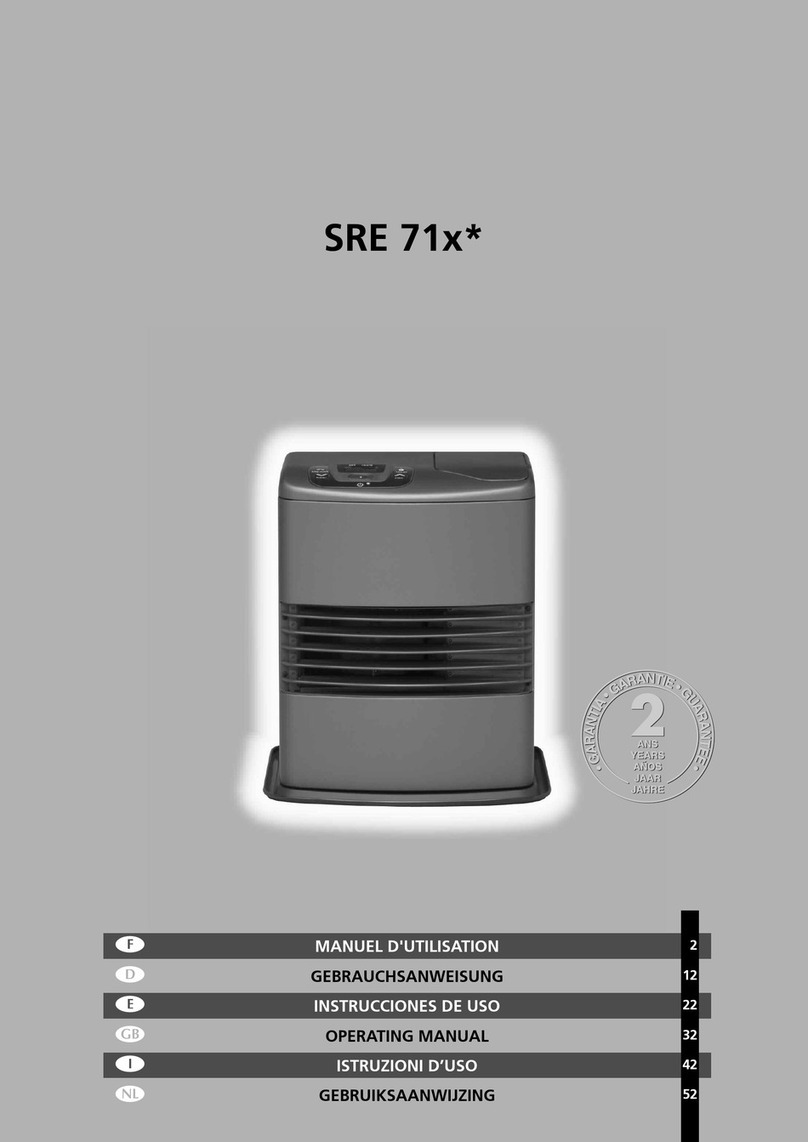
Qlima
Qlima SRE 71 Series Operation manual

Stanley
Stanley ST-40-GFA-E User's manual and operating instructions
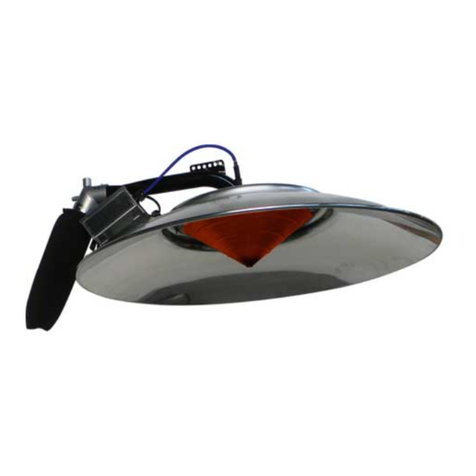
L.B. White
L.B. White I17 Owner's manual and instructions
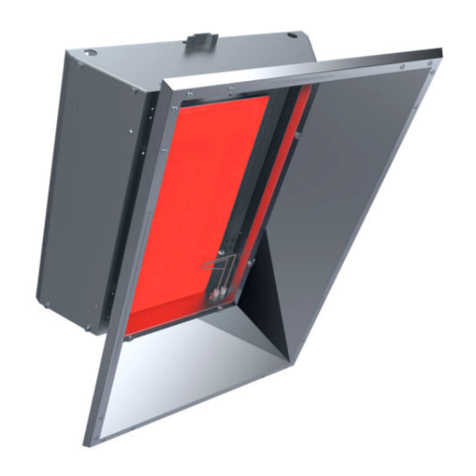
SRP
SRP S Series Installation, operation and service instructions
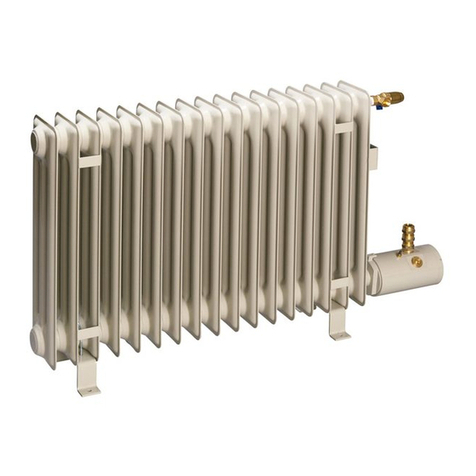
Sinus Jevi
Sinus Jevi SR-8600 manual
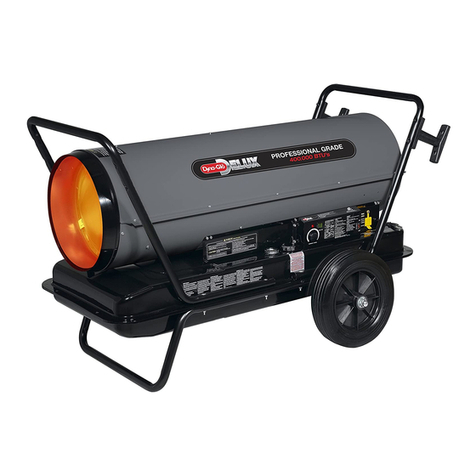
Dyna-Glo
Dyna-Glo Delux KFA400DGD User's manual and operating instructions
